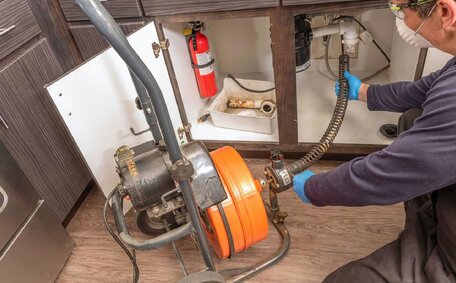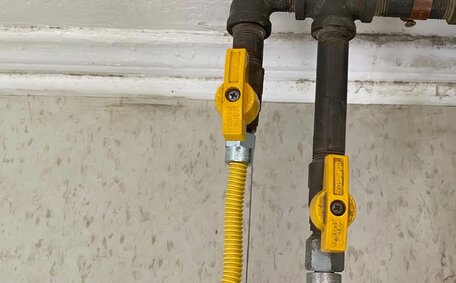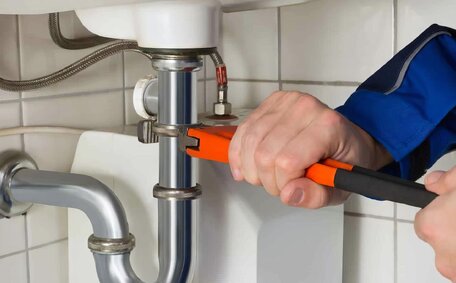Introduction to Tree Roots and Blocked Drains
As tree root systems seek out sources of water and nutrients, they can worm their way into sewer and drainage pipes through even the smallest cracks and gaps.
If left unchecked, the problem will only get worse, potentially causing sewage backups, significant property damage, and expensive plumbing repairs. Dealing with blocked drains caused by invasive tree roots is a common frustration for many homeowners and businesses in the Abbotsbury area. Over time, this root intrusion grows dense enough to obstruct the flow of wastewater, leading to backed-up drains, gurgling sounds, and foul odours.
As experienced plumbers serving Abbotsbury for over 10 years, we understand how much of a headache tree root blockages can be. Whether it’s a single clogged fixture or a whole-home sewer line backup, our team has the cutting-edge tools and know-how to diagnose the issue and clear your drains without destroying landscaping or digging up your yard.
We’re here to provide safe, effective solutions tailored to your unique situation. We’ll also advise you on preventative measures to protect your plumbing from future root damage.
Don’t let invasive roots continue wreaking havoc on your pipes. Call our friendly staff today to discuss restoring free drainage before the problem spirals out of control. We’re happy to assess your situation and recommend the best plan of action to keep your home or business’s plumbing system operating smoothly.
Why Tree Roots Invade and Damage Drain Pipes
The primary reason tree roots infiltrate and harm drainage pipes is because they are attracted to the moisture and nutrients inside the pipes. The small cracks and gaps around ageing or damaged sections of pipe allow tree roots to penetrate inside and take hold.
Roots grow towards sources of water and food to nourish the tree.
As the roots continue growing, they expand in density until they eventually clog up the drainage pipe completely. Even small hairy root strands or root hairs can accumulate over time to cause major blockages. As the roots continue growing, they expand in density until they eventually clog up the drainage pipe completely.
Tree roots will continue proliferating inside pipes unless corrective and preventative steps are taken.
Pipes that leak or have broken joints provide easy access points for roots to invade. Older pipes made of clay or metal are more susceptible to cracks and displacements that enable roots to creep inside. Once inside, the roots just keep spreading unless removed and the pipe repaired or replaced.
Identifying Signs of Tree Root Intrusion
There are several clear signs that tree roots have invaded and are blocking your drains or sewer lines. The most common symptoms of root intrusion include:
- Water draining from sinks, showers and toilets very slowly
- Gurgling sounds coming from drain pipes
- Foul sewage odours wafting up from drains
- Toilet, sink or tub overflowing with standing water
- Decreased water pressure throughout your plumbing system
You may also notice above ground signs like lush, green patches of grass or vegetation growing over your sewer/drain cleanout or septic tank area. This could indicate cracked pipes or joints that are allowing moisture and nutrients to leak, attracting roots.
If you experience any combination of these issues, especially on a recurring basis, it is highly likely that tree roots have infiltrated and are blocking your underground drainage pipes. Roots can be extremely destructive, so prompt detection and repair is crucial to prevent more costly damages.
But any nearby trees can send roots in search of water.
Don’t hesitate to call a professional plumber like Abbott Plumbing if you notice any signs of roots clogging your drains. We have the latest tools and techniques to inspect your pipes, pinpoint the problem, and clear your lines effectively. Some of the most problematic trees for causing root blockages include willows, elms, ficus, maples and palms.
Consequences of Blocked Drains
If a tree root blockage goes unaddressed too long, it can lead to severe and costly consequences for your home or business:
- Raw sewage backups - Blockages can cause wastewater and sewage to back up inside your pipes and overflow into sinks, bathtubs or toilets. This creates major health hazards and risks of disease.
- Flooding and water damage - Drainage pipes and fixtures can burst under the pressure of backups, flooding basements, walls and foundations. This leads to extremely expensive repairs.
- Sinkholes and soil erosion - Water leaking from broken underground pipes erodes soil and creates sinkholes or depressions in your yard.
- Plumbing repairs - Significant pipe damage from root intrusion requires replacing sections of pipe, a major and disruptive undertaking. Repipe costs quickly run into the thousands.
- Property value decline - Buyers will pay less for a home with known drainage and sewer issues. Problems must be disclosed at sale.
The potential consequences of a serious tree root blockage are too great to put off. At the first signs of roots in your drains, call Abbott Plumbing for professional drain cleaning or repair.
Our expert team uses cutting-edge tools to clear blockages and can advise you on relining or replacing pipes to prevent roots from returning.
Methods for Removing Tree Roots
There are a couple of main methods plumbers use to remove tree roots that have invaded drain pipes:
High-Pressure Water Jetting
Powerful, high-pressure water jets are an effective way to blast away root blockages and clear drains. Powerful, high-pressure water jets are an effective way to blast away root blockages and clear drains. However, jetting alone doesn’t prevent roots from regrowing and causing recurring clogs.
Specialty jetting nozzles can propel water at up to 5000 PSI to scour the pipe interior and wash away roots and debris.
Mechanical Root Cutting
Root cutting tools, like rodding machines, augers, and saws, are used to physically cut through the mass of roots inside a pipe. Root cutting provides longer lasting results compared to jetting, as it removes roots instead of just pushing them back. But broken root bits left behind can act as anchors for new root regrowth if pipe cracks remain.
These tools are rotated or spun to shred roots and scrape the pipe walls.
To prevent roots from returning after jetting or cutting, it’s recommended to inspect the drain line with a sewer camera, identify any pipe defects letting roots enter, and repair damaged sections. Contact Abbott Plumbing today if you suspect roots in your drains - we have extensive experience tackling tree root blockages and restoring free flow.
Relining pipes with epoxy or replacing them entirely provides the most durable long-term root solution.
Preventing Future Tree Root Damage
To minimise the risk of recurring drain blockages from invasive tree roots, there are several effective preventive measures you can take:
Careful Tree Planting
Avoid planting trees within 50 feet of sewer and drain lines whenever possible. Seek advice on planting root balls far from your plumbing system. Focus on smaller ornamental trees near foundations.
Regular Drain Inspections
Conduct annual camera inspections of your underground drainage pipes to check for root intrusion through cracks. Catching issues early is key. We offer professional sewer scoping to identify problem spots.
Early Pipe Repair
At the first sign of roots in drains, repair damaged pipes before growth worsens. We can seal small cracks and breaks with epoxy or reline pipes to create a protective barrier blocking roots.
Root Barriers
Install root barriers around drains near trees. Geotextile membranes deflect roots and are a useful proactive measure against root damage.
Contact Abbott Plumbing to discuss root prevention solutions. With regular maintenance and vigilant monitoring for root infiltration, you can avoid destructive drain clogs.
Strategic Tree Planting
When landscaping your property, carefully consider the placement of trees in relation to your home’s plumbing and drainage system. Some basic guidelines for strategic tree planting include:
- Plant trees at least 10 feet away from sewer pipes, septic tanks and drainage lines. The further away the better.
- Avoid planting trees with dense, invasive root systems like willows and maples near foundations.
- Opt for smaller ornamental trees, shrubs or grasses if planting near utility lines.
- Check maps of buried plumbing lines and plant accordingly.
- Group trees together in beds away from pipes rather than sporadically dotting individual trees.
- If planting near lines is unavoidable, use root barriers and prune regularly.
Proper planning when planting trees, shrubs and hedges can prevent extensive root damage. Carefully consider proximity to your home’s plumbing infrastructure so roots have less chance of infiltrating pipes. Contact our team at Abbotsbury Plumbing for advice on tree planting strategies unique to your property.
Pipe Inspections and Repairs
To prevent extensive damage from tree roots down the road, it is crucial to be proactive and inspect your underground drainage pipes regularly. Annual video inspections allow a plumber to thoroughly check the interior condition of pipes and spot any root intrusions or cracks early on.
At the first signs of roots breaching a pipe or joints separating, swift repairs are key. We can seal small cracks and gaps at access points with epoxy resin to block root access.
For more advanced pipe damage, trenchless relining with epoxy or CIPP is an effective solution that essentially creates a ‘pipe within a pipe’ barrier.
Compared to major drain repairs or replacement, epoxy relining is far less invasive and more affordable. It also allows us to reinforce the full length of pipe without the need for excessive digging or destruction to landscaping.
Pipe repairs not only halt further root damage but also prevent leaks that attract roots in the first place. Don’t allow roots to continuously invade your drains. Schedule an inspection with our team to identify necessary repairs before roots have a chance to spread.
Installing root barriers is a proactive way to prevent tree roots from invading and damaging drainage pipes on your property. Root barriers are physical obstructions made from various materials that deflect roots away from pipes.
Common types of root barriers include:
- PVC pipe shields - PVC cylinders wrapped around pipe joints to block root access.
- Copper shields - Copper fitting covers that emit ions to repel roots.
- Stainless steel mesh - Flexible woven steel mesh fitted around pipes.
- Moulded plastic barriers - Interlocking plastic panels placed beside pipes.
During new pipe installation, root barriers should be incorporated wherever tree proximity poses a risk. For existing pipes, barriers can be retrofitted by excavating to expose the line and installing shields.
While not impenetrable, quality root barriers reduce the need for pipe repairs and root removal down the road. They are an economical safeguard against invasive root damage for years to come. Contact our team at Abbotsbury Plumbing to discuss barrier solutions suitable for your site.






